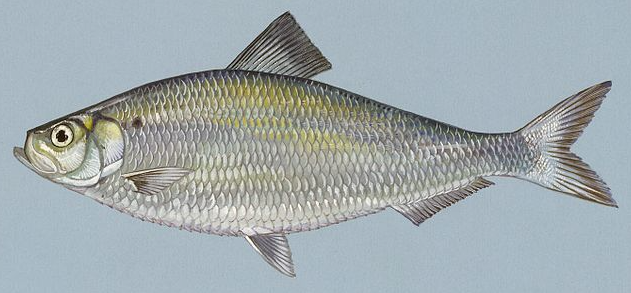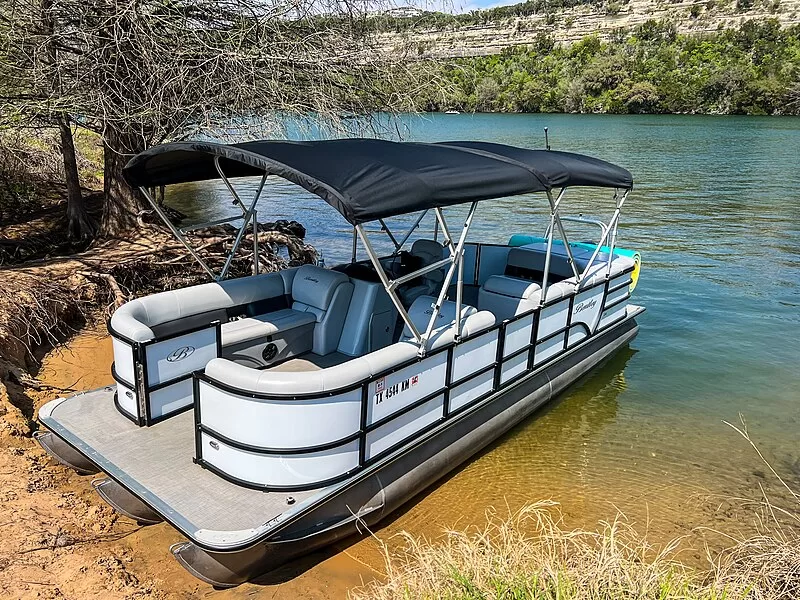The hardest part of successful bait fishing at Lake Wallenpaupack is catching alewife and keeping them alive and active. The actual fishing process is easy; it’s the preparation that is tough. Alewife aren’t easy to catch. Nothing can be more disheartening than spending your valuable fishing time throwing a cast net over and over again only to have the fruits of your labor go belly up shortly after. Here are a few tips from Wally BITES to help keep alewife alive so you can maximize your live bait fishing time!
What are Alewife?
Alewife are a sub-species of herring that can be found all across our Lake. They are very similar to shad. Alewife are a type of schooling fish and are similar to sharks in the sense that they must always be swimming to breathe; if they stop swimming they will begin to suffocate in short order.

#1. Water Flow
The real key to keeping alewife alive is water volume and flow in the tank. Alewife pump out a ton of ammonia as a waste product. The more they are stressed, the more ammonia they produce, which stresses them more, which causes even more ammonia. Stressing them produces a snowball effect with the ammonia levels in the water. The number one cause of stress is physical impact. As stated above, alewife are fish that constantly swim. If you throw them in a simple tank with an air pump, they will die quickly. Sure… they may have plenty of oxygen, but they still need to swim around. In doing so, they will slam their heads into the sides of the tank. This stresses them immensely making them not only weak, but also makes them pump out more ammonia. To keep them at their happiest, you need a circular tank with water flow. Water flow is the most important part. The water needs to be flowing in a circular pattern around the circular tank. Circular water flow allows the fish to swim against a slight current out in the middle of the tank (away from the sides) so they can avoid impact. Round and oval tanks keep the circular flow perfect, and give no corners for them to get trapped in.
#2. Tank Volume
To keep your bait fish fresh and alive, you should have no more than 2 alewife per gallon of water (1 per gallon is better). The bigger your tank, the more you can carry. For example, a simple tank with a capacity of 20 gallons can comfortably hold 20-40 alewife before overcrowding becomes a concern. Overcrowding is a big no-no; stress and ammonia go through the roof. With an undersized tank, you will end up trying to cram more alewife into the tank to make up for the ones you know will die; but that only makes the problem worse, and even more die quicker.
#3. Water Quality
The water in your tank needs to be conditioned properly for the alewife to do well. Filling the tank up with lake water and then throwing the fish right into it isn’t going to cut it if you want to keep a lot of them for a long time. The best option is to fill your tank up at home before leaving to fish. You can then add your water treatment chemicals so they have ample time to dissolve and work properly. For a 20 gallon tank, we suggest you add about 1/2 a cup of SureLife Shad Keeper, and a teaspoon of SureLife Please Release Me. These products set the fish up with everything they want in the water to stay healthy. The combination of the two also removes ammonia as it builds, and clears out any chlorine that is in the water that you fill the tank with. The chemical combination does a bunch of other things for the fish as well; slime coat, electrolytes, etc. It really does make a huge difference. You might also consider adding about a cup of non-iodized salt to the tank as well. The salt hardens the scales on the fish. Alewife and shad are saltwater fish, so it won’t hurt them. It actually helps them. An alewife or shad in fresh water is a lot more fragile than that fish is in salt water.
#4. Water Filtration
Alewife will choke on scales and debris in short order. If you’ve ever netted them, you’ve likely noticed the huge amount of scales they drop when you catch them (or pick them up with your hands). This is their natural defense against predators; if something grabs them, they can drop scales and slip away much like a lizard dropping its tail. You want to minimize the amount of scales that end up in your tank water. If you net them, don’t through them right into your tank. Better bet is to net them, then drop them into a small bucket first. Then wet your hands, and transfer them from the small bucket to the main tank. The initial large drop of scales from the netting process will stay in the first bucket (and out of your tank). They will still drop a lot of scales in the tank, so you would ideally have some type of filter to catch them and keep them from circulating in the tank water. Debris and sediment in the lake can choke them also, which is another reason to not use lake water.
#5. Water Temperature
Temperature is important, but it’s not as important as you may think. You want to keep alewife cool but not too cool. If you keep them cool, their metabolism will slow down, which means less CO2, ammonia, and waste are produced. They also need less oxygen. All of these things can be controlled fine by following the first 4 rules. Temperature is more important if you have an inadequate tank and poor water quality. Temperature has a huge downside. If you keep them too cool; they may be perfectly happy in the tank, but the second they hit the warm surface water when you fish them, the temp swing will shock them and kill them very quickly on the hook. They will go from warm lake water to cool tank water just fine, but going from cool tank to warm lake will shock them in a heartbeat. No sense going through all the other trouble to be fishing with a dead bait. If you’re going to cool the water, keep it within a few degrees of the lake water. Your tank may be 60°, the water at 20′ deep may be 60°, but you’ve got to get them through the 80° water at the surface to get them down there. That’s where they’ll die, even if you do everything else right. We suggest you keep the water temperature just a shade below the surface temp of the lake. Remember, they’ll go from warm to cool just fine but will not do well going from cool to warm.
Have any other tips that you’d like to share? Contact us or leave a comment below. Happy fishing!
